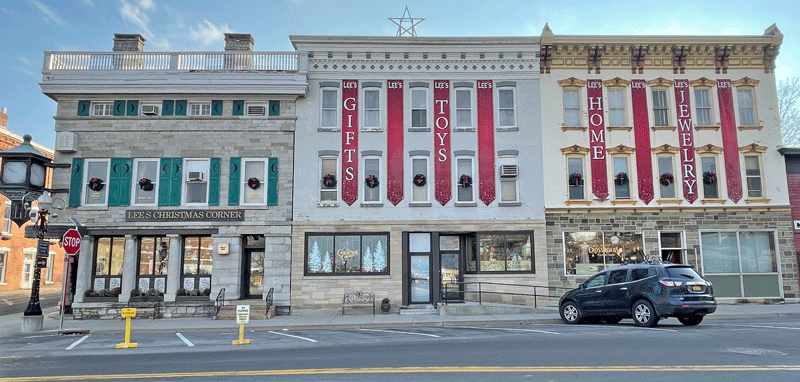 by Pat Malin
by Pat Malin
ONEIDA, NY — When Ross Hasty proudly showed off the robotic machines that are used in the warehouse at the HP Hood milk processing plant in Oneida, he spoke of them fondly in a paternal manner.
“We’ve come a long way,” said Hasty, who has been the Hood operations manager for 30 years. The robotic palletizers were first introduced to the plant 18 years ago and now there are four second-generation machines that spend their days and nights effortlessly lifting heavy bulk cartons of milk and placing them neatly on pallets. Then they can be stacked up in the warehouse and later loaded into refrigerated trucks.
Hasty admires the machines’ quiet operation. “It’s reduced costs,” he explained. “There’s nobody complaining of backaches for the rest of his life or strains from lifting and no worker’s compensation is needed.”
More importantly, the robots did not completely displace any people.
“We didn’t lose any employees, zero,” Hasty emphasized. “We gained in efficiency. We went from processing 100,000 gallons of milk a day to 155,000 gallons with the robots.”
With the Hood plant halfway through a year-long $38 million expansion of the plant, efficiency is an important consideration, but not at the expense of the human element. Hood operates 24/7. It processes 45 million gallons of milk annually with some 200 employees at present and expects to expand to 60 million with 240 employees by the end of the year.
New York State Commissioner of Agriculture and Markets Richard Ball toured the milk plant on June 16 in celebration of “June is Dairy Month.” Later in the afternoon, Ball traveled to the Sorrento cheese plant in Buffalo.
“It’s a good time of the year to take a few minutes to appreciate dairy products,” said Ball. “I’m a farmer. I grow vegetables now, but my roots are in dairy. My father worked in processing at a dairy plant and my first non-farm job was at a milk plant in western New York,” he added.
“It’s been many, many years since I’ve been inside a milk plant.” At the end of the nearly two-hour tour, he said he was “impressed” by what he saw. “It’s clean and modern, efficient and growing.”
Hood plant officials demonstrated the manufacturing process for the commissioner and others. Looking through glass windows at the assembly line, they watched how fluid milk is filled into half-pint, pint, quart and half-gallon sized extended shelf life (ESL) containers or tiny aseptic filler cups. The containers are made of a plastic composite. The mini aseptic cups you find at the coffee bar in convenience stores and in restaurants, don’t even need refrigeration.
The individual cartons are capped, sealed, stamp dated, packaged a dozen at a time into large shipping boxes, all done by machines, and sent to the warehouse, where the robots take over.
The visitors also toured the test lab where technicians take samples daily from cartons of 1 percent, 2 percent and fat-free milk, cream and Half & Half.
New York is the third-largest milk-producing state in the nation and accounts for 6.7 percent of national production, according to the state agricultural department. In 2013, there were 5,000 dairy farms and 610,000 dairy cows in New York. The average dairy farm had 121 cows producing 2.67 million pounds of milk per year. From 2010 to 2013, New York saw a 6.1 percent increase of pounds of milk per cow, compared to a 3.2 percent increase at the national level.
The increased production is meeting consumer demand and it hasn’t gone unnoticed by Hood. Massachusetts-based HP Hood LLC is one of the country’s largest branded dairy operators with 15 manufacturing plants throughout the nation, including five plants in New York state that employ nearly 1,000 people.
With the expansion, Hood said it will add good-paying jobs across the board in processing, maintenance, quality control and warehouse.
“We’ve been very fortunate to have a stable workforce” since the Oneida plant came online in the 1960s, noted Plant Manager Steve Pelkey, who has been on the job for a remarkable 35 years. “We have a high percentage of long-term employees, but it will be a test in the next year to see if we can attract more young people.”
The future workforce in the dairy industry is also of concern to Northeast Dairy Foods Association. Bruce Krupke, executive vice-president of the association, was one of the guests on the Hood tour. He pointed out that SUNY Cobleskill, Morrisville State College and Cornell University are beginning to implement courses that will train students to work in dairy plants like Hood’s.











Leave A Comment